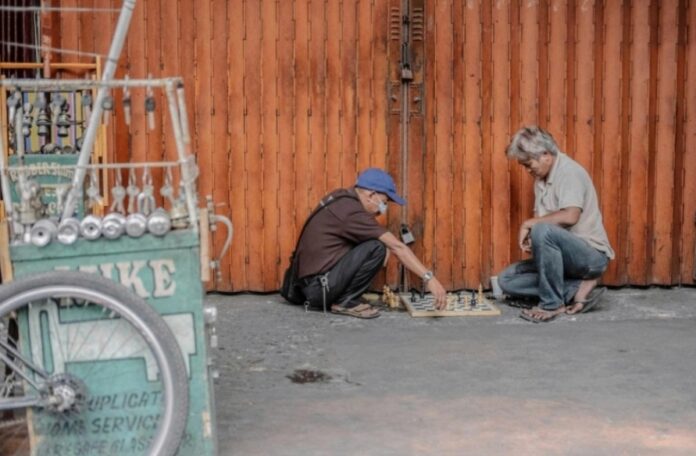The Philippines is renowned for its warm hospitality and rich cultural heritage. While a lot of aspects from the Filipino culture are familiar to foreigners, there are countless quirks and traditions that may seem strange or even bizarre to those unfamiliar with the country.
These customs, often passed down from generation to generation, offer a glimpse into the heart and soul of what it really means to be Filipino.
Beyond the well-known traditions like bayanihan or the spirit of cooperation, and using po and opo in terms of respect, Filipino culture is filled with multitude of other idiosyncrasies that set it apart. These quirks, while often taken for granted by Filipino, can be quite surprising to others. From unusual dining etiquette to peculiar superstitions, this article explores some of the most fascinating and unexpected Filipino cultural norms.
The spirit of bayanihan
First and foremost, the bayanihan spirit is a true Filipino value that emphasizes cooperation and community. This is evident in the way Filipinos work together to accomplish tasks, such as building houses, repairing roads, or even simply helping a kababayan. The bayanihan spirit lives long from generation to generation and is seen as a key part of Filipino identity.
Unusual funeral practices
Filipino funerals are often elaborate affairs and family reunions that can last for several days up to a week. One of the most unusual funeral practices involved playing cards or tongits during the wake, just right in front of the coffin. This may seem inappropriate and disrespectful to others, but it’s actually seen as a way to honor the deceased and provide [quite the unusual] comfort to the grieving family.
Filipino time
Filipino time, often jokingly referred to as “island time,” is a cultural norm that has intrigued both locals and foreigners alike. It essentially refers to a relaxed attitude towards punctuality, where events start later than originally announced or scheduled. While this can be frustrating, it also has its humorous side. Jokes and memes about Filipino time are common in the Philippines, and it’s often used as a lighthearted way to poke fun at the country’s cultural quirks. But reader, let this be a reminder to not practice Filipino time! While it may seem funny, it’s still better to respect other people’s time.
Pagmamano
Mano is a common greeting in the Philippines that involves touching the elder’s hand with your forehead as a sign of respect. This gesture is seen as a way to show reverence for one’s elders, such as their lolo and lola, and if often accompanied by saying “Mano po.”
Spirituality or superstition: which comes first?
The Philippines, having been shaped by centuries of colonization, has developed a unique spiritual landscape that blends elements from various religions and belief systems. This eclectic mix has resulted in a population that is both deeply rooted in religion, but at the same time believing in superstitions. From the fervent devotion displayed during the Feast of the Black Nazarene to the need for “pagpag” after coming from a wake, Filipino spirituality is surely a fascinating blend of tradition and folklore that reflects the country’s rich and complex history.
The aswang tales
Aswang, a term associated with a variety of mythical creatures in Filipino folklore, has been a source of fear and fascination for centuries. These creatures, often linked with darkness, black magic, and the supernatural, vary in form and abilities but share a common predatory nature. From the manananggal’s detachable upper body to the tikbalang’s mischievous spirit and the kapre’s giant build, aswang stories have been passed down through generations, reflecting the deep cultural and spiritual beliefs of Filipinos.
Kumain ka na? A common greeting
Filipinos have a deep-rooted love for food, which flows down through every aspect of their lives. From the three substantial meals a day to the countless snacks enjoyed throughout the day known as merienda, food is indeed a central part of Filipino culture. This emphasis on food is also reflected in the common greeting “Kumain ka na ba?” (Have you eaten?). Filipinos often insist on sharing a meal or snack with their guests, especially elders who take great pleasure in feeding others. So, when a Filipino greets you with this question, just know that it’s a sign of their genuine care and desire to make you feel welcome.
Filipino resilience in the face of calamity
The Philippines, a nation frequently struck by natural calamities, has developed a remarkable spirit of resilience. This is rooted in strong family ties, the bayanihan spirit, optimism, and faith, allowing Filipinos to bounce back from adversity. In the aftermath of disasters, you can still see Filipino smiling for the camera even when their background clearly shows flooded streets. Oftentimes, communities come together to rebuild and support one another, demonstrating the unbreakable human bond and spirit. The resilience of Filipinos is a source of inspiration for people around the world, a testament to the strength and perseverance of humanity.
Wrapping Up
The Philippines is indeed a country with a rich and diverse culture. The unique customs and traditions are a true testament to the heart and soul of Filipino society. And while these quirks may seem strange to others, they are an integral part of what it means to be a Filipino. #hydnews #khabarlive







